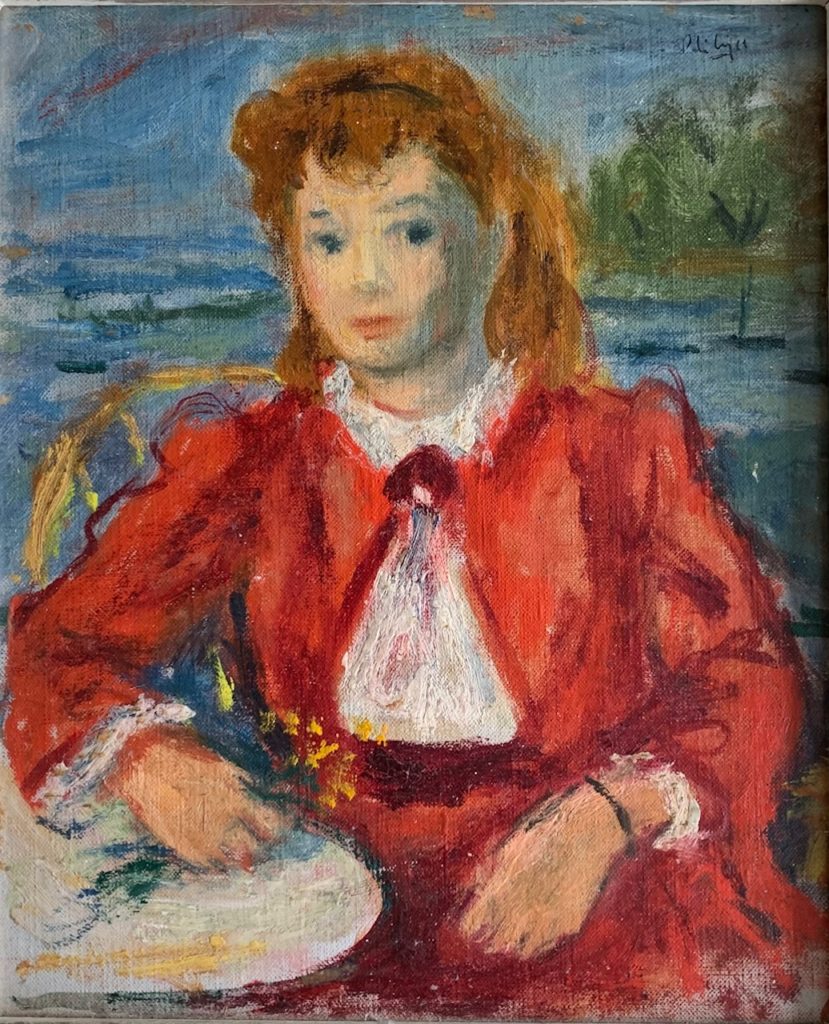
oil on canvas board 10 x 12 in.
Lady in Red by Robert Philipp
Robert Philipp, was born Moses Solomon Philipp, on February 2, 1895, in New York City. Demonstrating early artistic prowess, he thrived in a family environment that nurtured and encouraged his creative inclinations. At the age of 15, Philipp enrolled in the Art Students League, dedicating four years to improving his skills. Subsequently, he pursued further training at the National Academy of Design. Notable mentors during his time at the League included George Bridgeman and Frank DuMond, while at the National Academy, he also studied under Douglas Volk and George Willoughby Maynard.
Philipp swiftly gained recognition, and his early works showcased an eclectic blend of artistic influences, drawing inspiration from Vermeer, Rembrandt, Renoir, Bonnard, Sargent, and Fantin-Latour. Following his father’s death, Philipp briefly shifted away from painting, temporarily joining his uncle’s opera company as a tenor. However, he eventually returned to his true passion, settling in Paris during the 1920s. While the exact dates of his Parisian residency remain uncertain, reports indicate that he lived there for a decade, supporting himself through the sale of his paintings.
Returning to New York in the early 1930s, Philipp garnered acclaim for his portraits and figure studies. His piece titled “Olympia” earned the Logan Prize at the Art Institute of Chicago in 1936 and was subsequently acquired by J. Paul Getty. During the Great Depression, he contributed to the Public Works of Art Project.
In 1934, Philipp tied the knot with fellow artist Shelly (Rochelle) Post, who became his favored model until her passing in 1971. Renowned critic Henry McBride hailed Philipp as “One of the top ten painters in America.” Throughout the 1930s, he expanded his repertoire to include landscapes, still life, and nudes, evolving a distinctively lyrical and modern style.
Philipp painted with fervor and directness, seamlessly blending observation and poetic vision through high-keyed colors and rhythmic treatment of form. In his later years, his work increasingly echoed the expressive and emotional style of Chaim Soutine.
As an influential figure in American art, Philipp served as a teacher at the Art Students League for over thirty years and at the National Academy for sixteen years. Renowned for his focus on color and his unwavering emphasis on the importance of drawing, he became a respected member of the Lotus Club, National Academy of Design, and Royal Society of Arts.
His artistic legacy endures in the collections of esteemed institutions such as the Corcoran Gallery in Washington, D.C., the High Museum in Atlanta, Georgia, the Dallas Museum in Texas, and the Metropolitan Museum of Art and Whitney Museum of American Art in New York City. Some of his other works can be seen here.